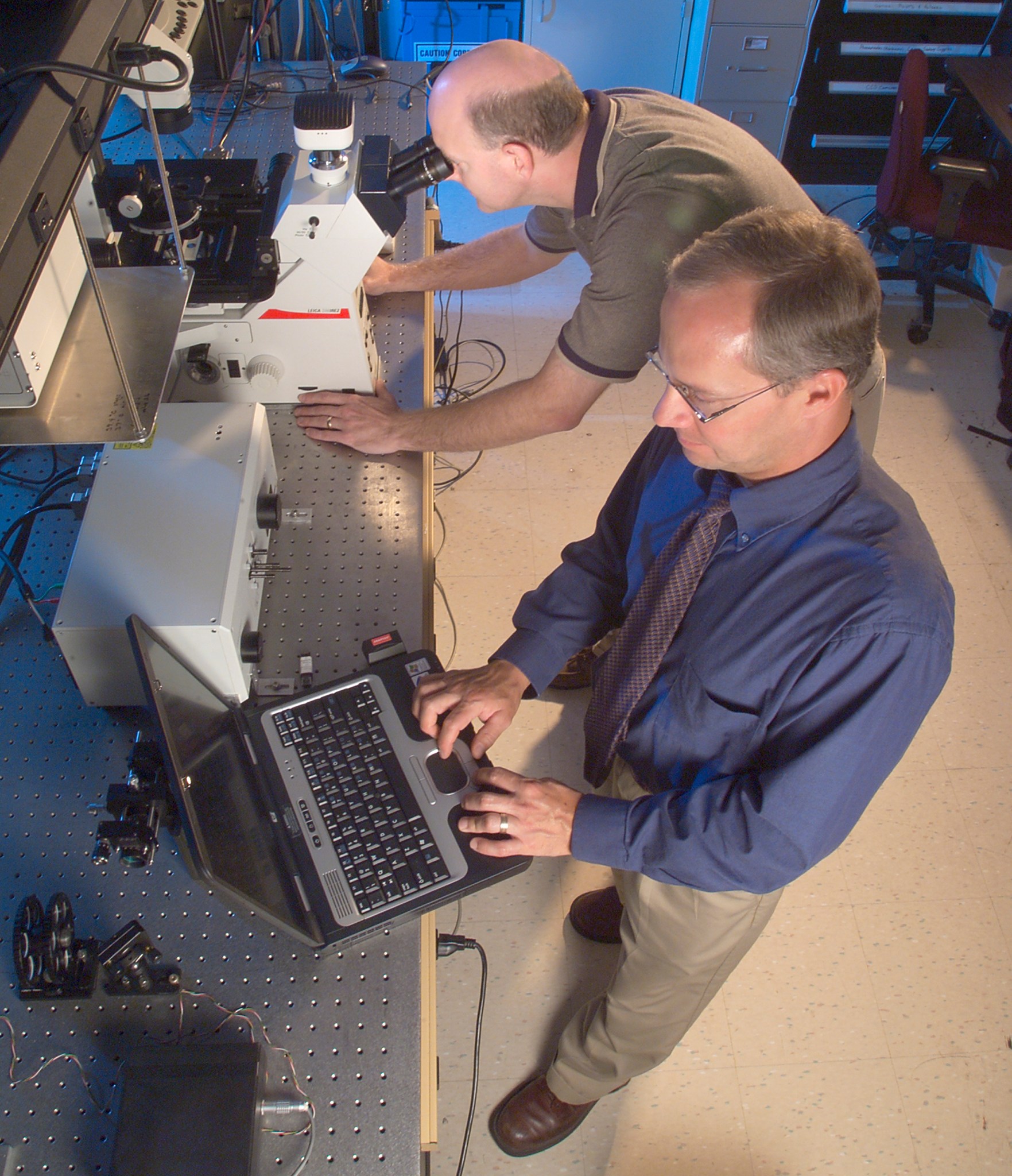On the morning of June 7, 2002 approximately 60 local medical professionals and center employees gathered in the Glenn Research Center’s Zero Gravity Facility to witness the signing of an agreement between five of the area’s largest research institutions to study health concerns related to human spaceflight.
The John Glenn Biomedical Engineering Consortium, consisting of NASA Glenn, the Cleveland Clinic Foundation, University Hospitals, Case Western Reserve University and the National Center for Microgravity Research, committed staff and resources to a three-year effort.
NASA Glenn began delving into the medical field in the late 1970s, producing such technologies as a new method of cataract surgery, neutron cancer therapy and the Emergency Medical System tracking. The center also signed a three-year agreement with the Clinic in 1995 that led to the successful application of NASA technologies to heart-assist devices, vision testing, wheelchair controls and dental implants.
In the early 2000s Glenn again sought to partner with local medical institutions to study space-related health issues. Space travel affects fluid distribution in the body and the ability to perceive motion. Astronauts returning to Earth after long durations in space were exhibiting health issues such as cataracts and osteoporosis. As NASA started planning extended journeys to the Moon and Mars the agency was interested in studying and solving these potential health issues.
The three-year effort focused on 10 medical and safety issues related with human spaceflight. NASA Glenn led five of the investigations including the development of tools that permit diagnostic evaluations through the eye, measurement of bone density, remotely detecting cardiac dysrhythmia and analysis of crew activity.
NASA established the Human Research Program in October 2005 to address space-related health issues across the agency. Several of the Biomedical Engineering Consortium’s studies transitioned in the NASA program. Today, NASA Glenn contributes to the effort by identifying and mitigating a range of physiological problems caused by spaceflight and developing technology to forecast and prevent health risks associated with inflight medical conditions.
Robert S. Arrighi
NASA’s Glenn Research Center































